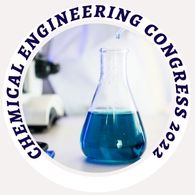Enzymes, Biocatalysis and Biotransformation
Track 12.Enzymes, Biocatalysis and Biotransformation
Enzymes(/ˈɛnzaɪmz/) are proteins that go about as organic impetuses (biocatalysts). Impetuses speed up compound responses. The particles whereupon chemicals may act are called substrates, and the protein changes over the substrates into various atoms known as items. Practically all metabolic cycles in the phone need compound catalysis to happen at rates sufficiently quick to support life. Metabolic pathways rely on catalysts to catalyze singular advances. The investigation of chemicals is called enzymology and another field of pseudoenzyme examination has as of late adult, perceiving that during development, a few catalysts have lost the capacity to complete organic catalysis, which is frequently reflected in their amino corrosive groupings and strange 'pseudocatalytic' properties.
Proteins are known to catalyze in excess of 5,000 biochemical response types. Other biocatalysts are synergist RNA particles, called ribozymes. Chemicals' explicitness comes from their one of kind three-dimensional constructions.
Like all impetuses, proteins increment the response rate by bringing down its enactment energy. A few proteins can cause their change of substrate to item to happen a huge number of times quicker. A limit model is orotidine 5'- phosphate decarboxylase, which permits a response that would somehow require a long period of time to happen in milliseconds. Chemically, proteins resemble any impetus and are not devoured in substance responses, nor do they adjust the balance of a response. Compounds vary from most different impetuses by being substantially more explicit. Chemical movement can be influenced by different particles: inhibitors are atoms that decline catalyst action, and activators are atoms that increment action. Numerous helpful medications and toxic substances are protein inhibitors. A protein's action diminishes notably outside its ideal temperature and pH, and numerous catalysts are (forever) denatured when presented to unreasonable warmth, losing their design and synergist properties.
A few chemicals are utilized monetarily, for instance, in the union of anti-microbials. like
- organic washing powders
- meat tenderizer
Related Conference of Enzymes, Biocatalysis and Biotransformation
Enzymes, Biocatalysis and Biotransformation Conference Speakers
Recommended Sessions
- Biochemical Engineering
- Biomaterials and Biopolymers
- Catalysis and Reaction Engineering
- Catalysis and Zeolites
- Catalysis for Biorefineries
- Catalysis for Chemical Synthesis
- Catalysis for Energy
- Catalysis in Nanotechnology
- Catalytic Materials & Mechanisms
- Catalytic Pyrolysis
- Chemical Engineering in Nanotechnology
- Chemical Kinetics
- Drug discovery and synthesis
- Electrocatalysis
- Environmental Catalysis
- Enzymes, Biocatalysis and Biotransformation
- Fluid dynamics & its Phenomena
- Green and Sustainable Chemistry
- Heterogeneous Catalysis and Homogeneous Catalysis
- Industrial Chemistry
- Molecular Catalysis
- Organocatalysis
- Organometallics and Synthesis
- Petrochemical Engineering
- Photocatalysis
- Plasma Catalysis
- Polymer Chemistry
- Surface Chemistry
Related Journals
Are you interested in
- 3D Printing in Microfluidics - Microfluidics 2026 (Germany)
- AI & Automation in Microfluidic Systems - Microfluidics 2026 (Germany)
- Biomedical Microfluidic Applications - Microfluidics 2026 (Germany)
- Clinical Translation & Commercialization - Microfluidics 2026 (Germany)
- Droplet-Based Microfluidics - Microfluidics 2026 (Germany)
- Lab-on-a-Chip Innovations - Microfluidics 2026 (Germany)
- Microfabrication & Soft Lithography - Microfluidics 2026 (Germany)
- Microfluidic Biosensors & Diagnostics - Microfluidics 2026 (Germany)
- Microfluidic Cell Culture Platforms - Microfluidics 2026 (Germany)
- Microfluidics for Drug Delivery - Microfluidics 2026 (Germany)
- Microreactors & Chemical Processing - Microfluidics 2026 (Germany)
- Nanofluidics & Molecular Transport - Microfluidics 2026 (Germany)
- Organ-on-Chip Engineering - Microfluidics 2026 (Germany)
- Point-of-Care Microdevices - Microfluidics 2026 (Germany)
- Single-Cell Microfluidic Analysis - Microfluidics 2026 (Germany)

